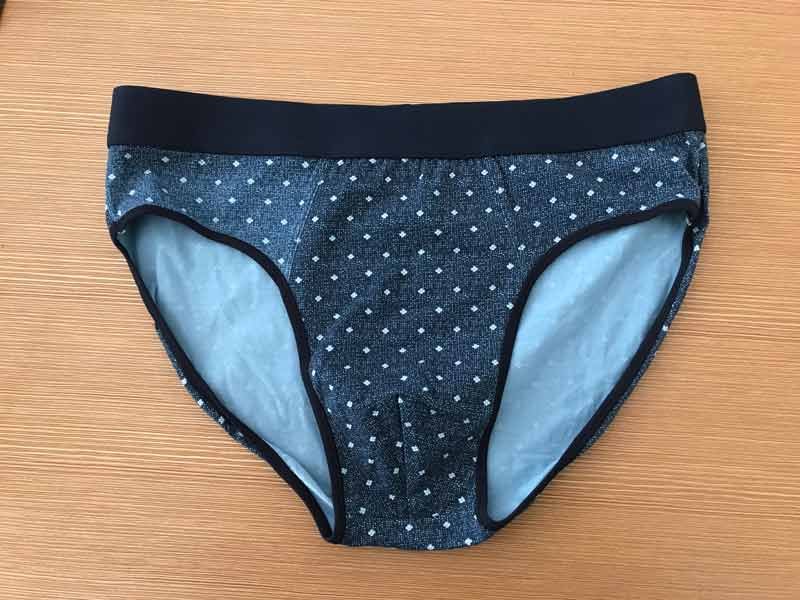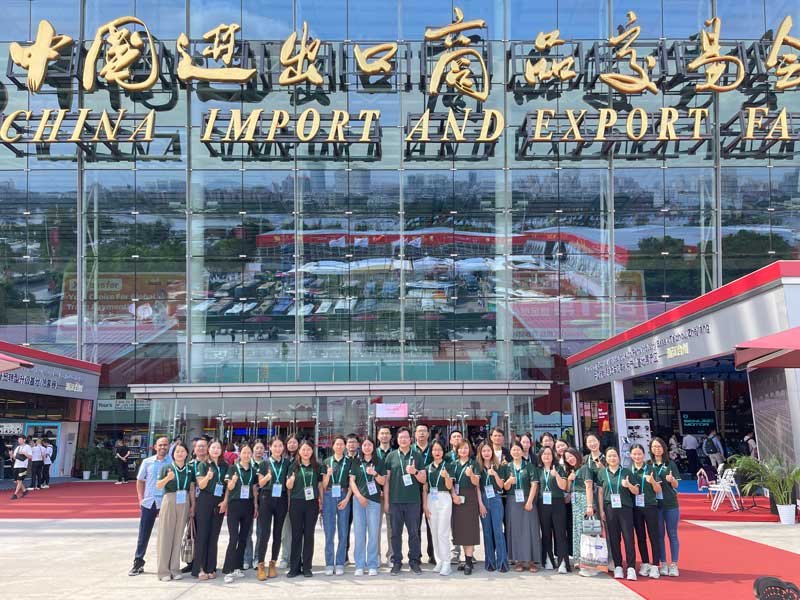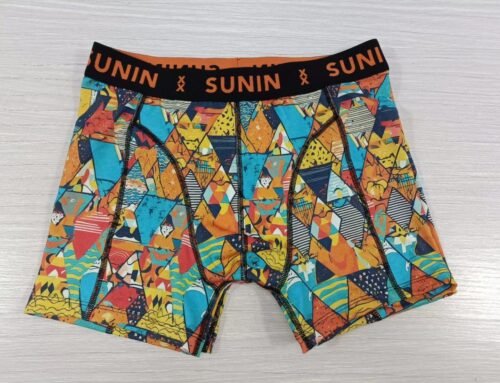When it comes to underwear manufacturing, choosing the right fabric is crucial for comfort, durability, and design. Different fabrics have various properties that influence the overall quality of the underwear, such as breathability, stretchability, softness, and moisture-wicking capabilities. In this article, we will explore the most commonly used fabrics in underwear manufacturing, discussing their advantages and disadvantages, helping you understand which fabric is best suited for your needs.
1. Cotton
Cotton is one of the most popular fabrics used in underwear manufacturing due to its softness, breathability, and natural fiber composition.
Advantages:
-
Breathable: Cotton allows air to circulate, keeping the skin cool and reducing sweat buildup.
-
Hypoallergenic: It’s less likely to irritate sensitive skin or cause allergic reactions.
-
Moisture-Absorbing: Cotton absorbs moisture, making it ideal for daily wear and hot climates.
-
Comfortable: Its soft texture ensures maximum comfort during extended wear.

Disadvantages:
-
Retains Moisture: While cotton absorbs moisture, it does not dry quickly, which may cause discomfort or bacterial growth over time.
-
Less Stretchy: Cotton underwear tends to lose shape and elasticity after multiple washes.
-
Prone to Shrinking: Cotton may shrink in the wash if not handled carefully.
2. Silk
Silk is known for its luxurious feel and delicate appearance. It’s commonly used in premium lingerie due to its smooth texture.
Advantages:
-
Luxurious Feel: Silk offers a soft, smooth touch that feels gentle against the skin.
-
Temperature Regulation: Silk naturally adjusts to body temperature, keeping you cool in summer and warm in winter.
-
Hypoallergenic: Like cotton, silk is also suitable for sensitive skin.
Disadvantages:
-
High Maintenance: Silk is delicate and requires special care, such as handwashing and air-drying.
-
Expensive: As a luxury fabric, silk tends to be more expensive than other materials.
-
Limited Durability: Silk can wear out faster than synthetic materials or cotton.
3. Modal
Modal is a semi-synthetic fabric made from beech tree pulp. It’s a popular choice for modern underwear due to its softness and breathability.
Advantages:
-
Extremely Soft: Modal is known for its silky texture and is softer than cotton.
-
Durable: It retains its shape well even after multiple washes.
-
Moisture-Wicking: Modal is good at pulling moisture away from the skin, keeping you dry throughout the day.
-
Shrink-Resistant: Unlike cotton, modal underwear doesn’t shrink easily when washed.

Disadvantages:
-
Expensive: Modal tends to be pricier than cotton or synthetic fabrics.
-
Environmental Impact: The production process of modal can sometimes involve harmful chemicals, raising concerns about sustainability.
4. Lace
Lace is commonly used in women’s lingerie due to its elegant and intricate designs.
Advantages:
-
Aesthetic Appeal: Lace is visually appealing and adds a touch of elegance to underwear designs.
-
Lightweight: Lace is generally lightweight and breathable, offering comfort without bulk.
Disadvantages:
-
Delicate: Lace is fragile and prone to tearing if not handled carefully.
-
Less Supportive: It does not provide as much structure or support as other fabrics like cotton or spandex.
5. Spandex/Elastane (Lycra)
Spandex, also known as elastane or Lycra, is a synthetic fiber commonly blended with other fabrics to provide stretch and flexibility.
Advantages:
-
Highly Stretchable: Spandex allows underwear to stretch and conform to the body, providing a snug fit.
-
Shape Retention: It retains its shape even after repeated wear and washing.
-
Quick-Drying: Spandex dries quickly, making it ideal for activewear and sports underwear.
Disadvantages:
-
Non-Breathable: Spandex is not as breathable as natural fabrics, which can trap heat and sweat.
-
Synthetic Feel: Some people may find spandex less comfortable compared to natural fabrics like cotton.
6. Nylon
Nylon is a synthetic fabric known for its durability and smooth finish. It’s commonly used in sportswear and active underwear.
Advantages:
-
Durable: Nylon is long-lasting and resistant to wear and tear, making it perfect for everyday use.
-
Moisture-Wicking: Nylon can wick moisture away from the skin, keeping you dry during workouts or hot days.
-
Lightweight: It’s a lightweight material, providing comfort without feeling bulky.
Disadvantages:
-
Not Very Breathable: Nylon tends to trap heat, which can cause discomfort during prolonged wear.
-
Synthetic Feel: Nylon has a slightly rougher texture than natural fibers like cotton or silk.
Advantages of Our Underwear Manufacturing Factory

At our underwear manufacturing factory, we take pride in delivering high-quality products that meet the needs and expectations of our customers. Here are the key advantages of working with us:
-
High-Quality Materials: We use a wide range of premium fabrics, including cotton, silk, modal, and spandex, ensuring comfort, durability, and luxury in every product.
-
Advanced Manufacturing Processes: With state-of-the-art machinery and skilled workers, we ensure precise cutting, stitching, and quality control in every piece of underwear we produce.
-
Customization: We offer bespoke solutions for clients looking for personalized underwear, including custom prints, designs, and sizes.
-
Sustainability: We prioritize sustainability by sourcing eco-friendly fabrics and employing energy-efficient processes, minimizing our environmental impact.
-
Timely Delivery: With an efficient production line and a streamlined supply chain, we guarantee timely delivery of bulk orders to meet your business needs.
-
Competitive Pricing: Despite our high-quality standards, we offer affordable pricing for large orders, making us a cost-effective solution for businesses and retailers.
Frequently Asked Questions (FAQ)
1. What fabrics do you use for your underwear production?
We use a wide variety of fabrics, including cotton, silk, modal, spandex, lace, and nylon. Each fabric is carefully selected based on its benefits, such as breathability, comfort, durability, and aesthetic appeal. We can also customize fabric choices based on your preferences.
2. Can I customize the design of my underwear?
Yes! We offer full customization services. You can choose the design, fabric, color, and even add custom prints or embroidery. Our design team will work closely with you to bring your vision to life.
3. How do you ensure the quality of your underwear?
We have a strict quality control process that includes multiple stages of inspection. Each product goes through a thorough check for stitching, fabric quality, and overall comfort. We also conduct fit tests to ensure that our underwear fits comfortably for different body types.
4. Do you offer sustainable or eco-friendly options?
Yes, we are committed to sustainability and offer eco-friendly fabric options such as organic cotton and recycled polyester. Additionally, our manufacturing processes are designed to minimize waste and energy consumption.
5. How long will it take to receive my order?
Delivery time depends on the order size and your location. Typically, our production process takes 7-14 days for standard orders, while larger or custom orders may take longer. We will provide an estimated timeline when you place an order.
6. Do you offer bulk orders?
Yes, we specialize in bulk orders and can handle large-scale production efficiently. Our factory is equipped to meet high-demand orders while maintaining quality and timely delivery.


